Battlefield Visits, Epic Man Trip Edition – Part 6: Colonial National Historical Park
From my travels, June 29, 2023.
Battle of Big Bethel – Civil War Battlefield #174
Since it occurred on June 10, 1861, some people consider the Battle of Big Bethel to be the first “real” land battle of the Civil War; that all the actions that came before were merely “skirmishes.” I don’t fall into this camp. For me, the Battle of Philippi (which I visited as battlefield #84 for me, all the way back in April of 2019) holds that title.
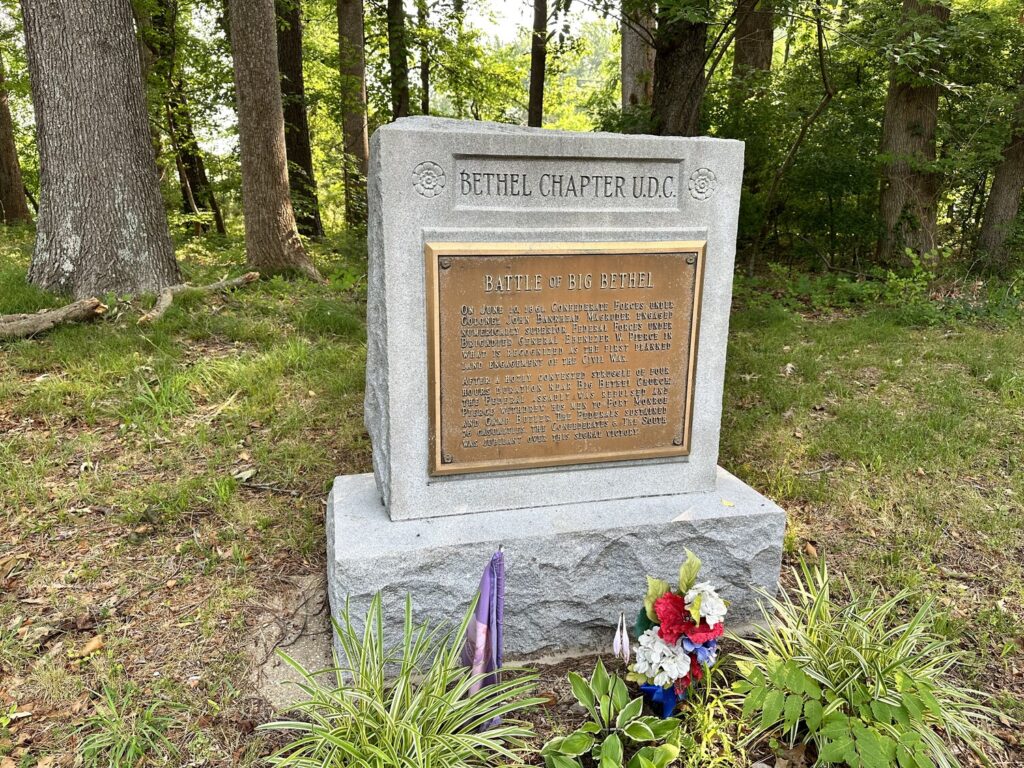
Either way, this was an early foray up the peninsula by a small Union force from Fort Monroe that was halted by some well-placed Confederate defenses. The rebels repelled multiple attacks and put up some counterattacks of their own, causing the Federal troops to retreat back to the safety of the fort. Union losses were 76 men in total – including some who were caught in an incident of friendly fire. As this was still early in the war, the Union 3rd NY infantry was still wearing their original gray militia uniforms. Men of the 7th NY mistook them for flanking rebels and opened fire, wounding dozens of their compatriots.
Today, almost none of the battlefield is still left. It is now neighborhoods – including housing for nearby Joint Base Langley/Eustis – and a large chunk has been covered by the modern Big Bethel Reservoir. There is a small park on the south side of the reservoir – maybe an acre or two – that has *14* monuments and markers on it! One of the most densely marked fields I’ve ever seen.
Colonial National Historical Park – Yorktown
Yorktown. There’s obviously Revolutionary War history here, but also some Civil War (which I’ll touch on in a minute).
We saw the film here, went through their nice museum (that included original tents used by George Washington!) and toured the field. Between this and Saratoga, we’ve now seen two British surrender sites. We also did the Junior Ranger program here.
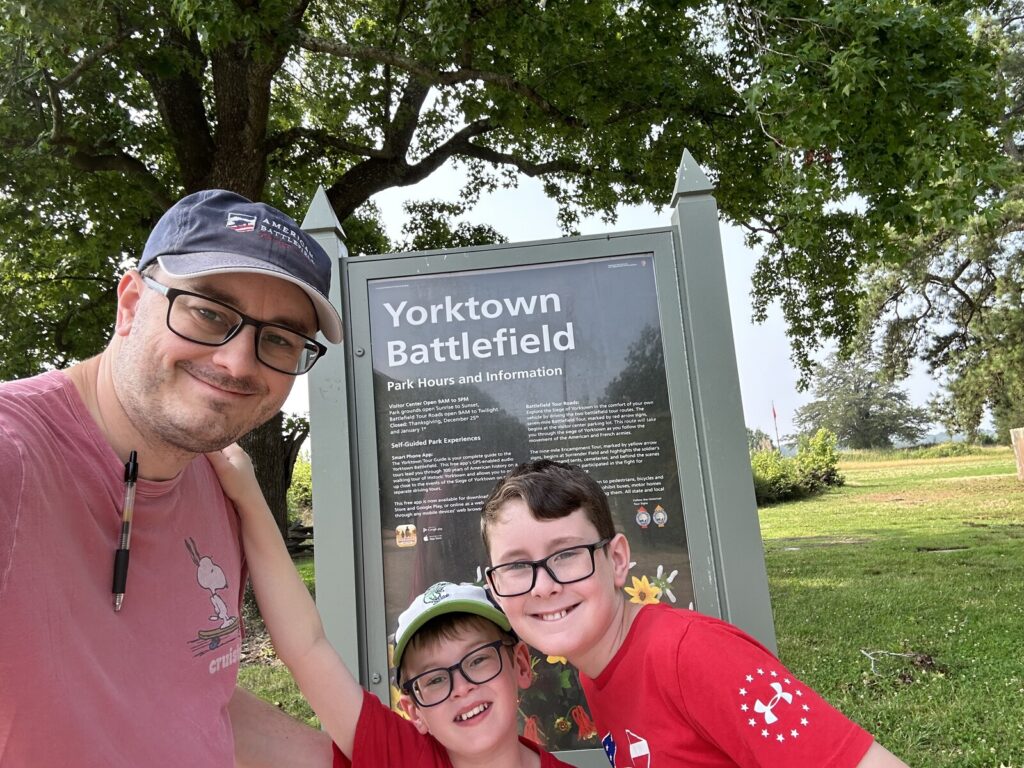
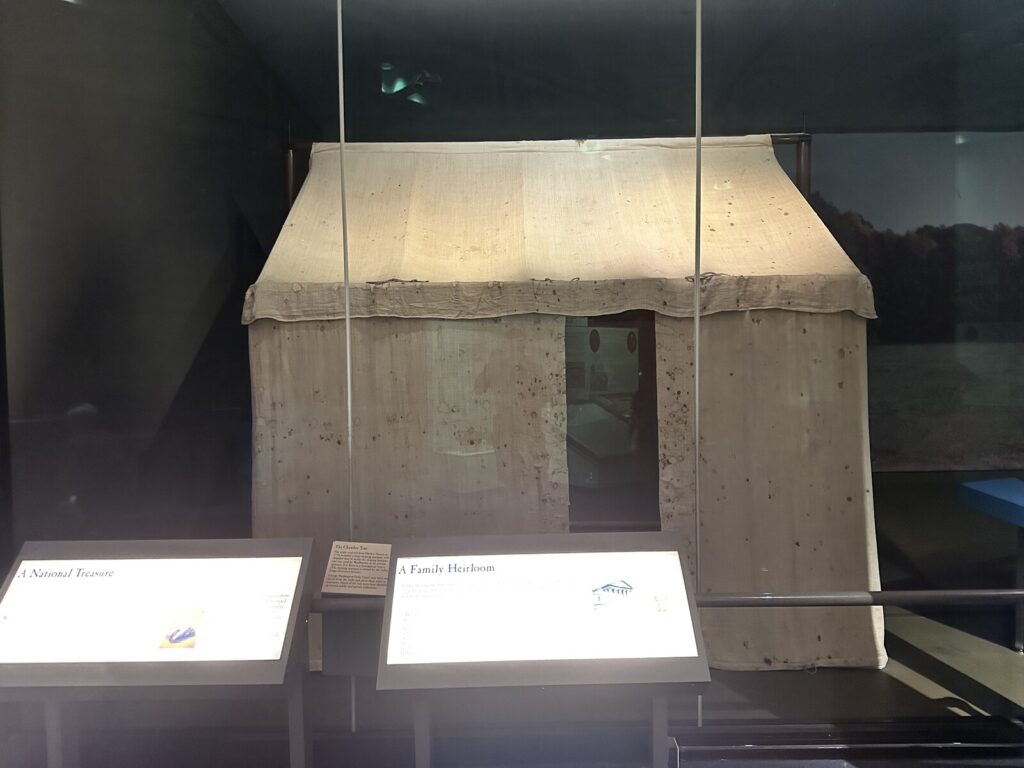
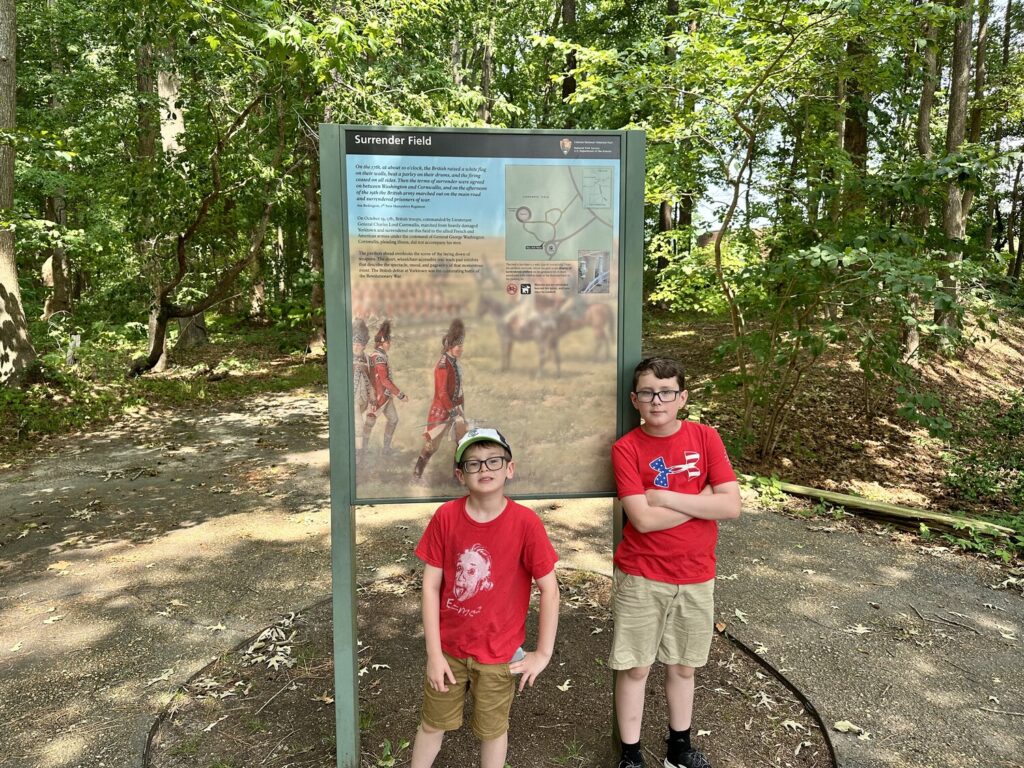
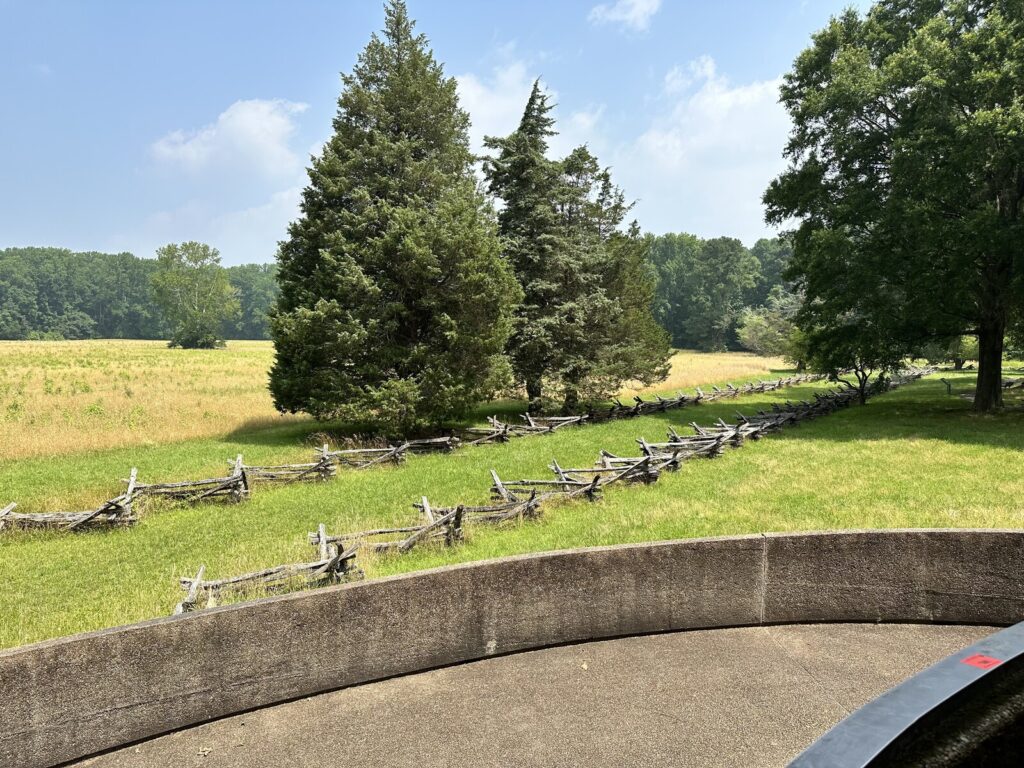
Siege of Yorktown – Civil War Battlefield #175
Maj. Gen. George McClellan wanted to capture Richmond, and rather than assaulting “overland” (as Grant would successfully do 2 years later), he opted for a mostly naval approach. He landed his army at Fort Monroe and marched north along the peninsula.
The Confederates had converted some of the old British earthworks from the Revolutionary War and extended them to cover the ground from the York to the James River. When McClellan arrived, he became concerned about the fortifications here (and also paranoid that he was somehow outnumbered) so he spent weeks amassing the largest collection of siege artillery that had ever been assembled in America up to that point. The Siege of Yorktown was on. By the time he was ready to attack though, the few Confederates that were here had fallen back to a new line near Williamsburg. McClellan had given them plenty of time to prepare.
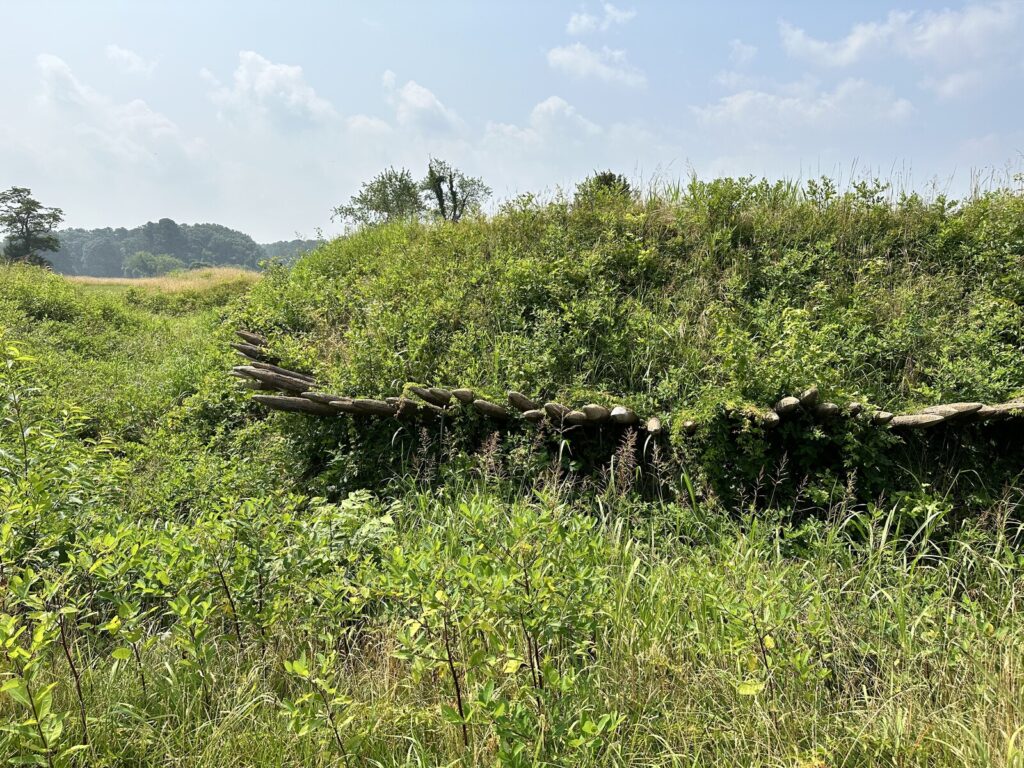
The NPS doesn’t do much to interpret the Civil War actions here – they focus on the Revolutionary War. If you ask at the front desk, they can give you an additional pamphlet that discusses the Civil War actions at various stops along their normal tour route.
Colonial National Historical Park – Jamestowne
Jamestowne. Very cool to see the actual spot of the first permanent English colony in America. The museum here had a lot of relics that were found during archaeological digs in the past few decades. They have learned enough through that process that they’ve begun reconstructing the site as it would have originally appeared, though some of the original site has been eroded away by the James River.
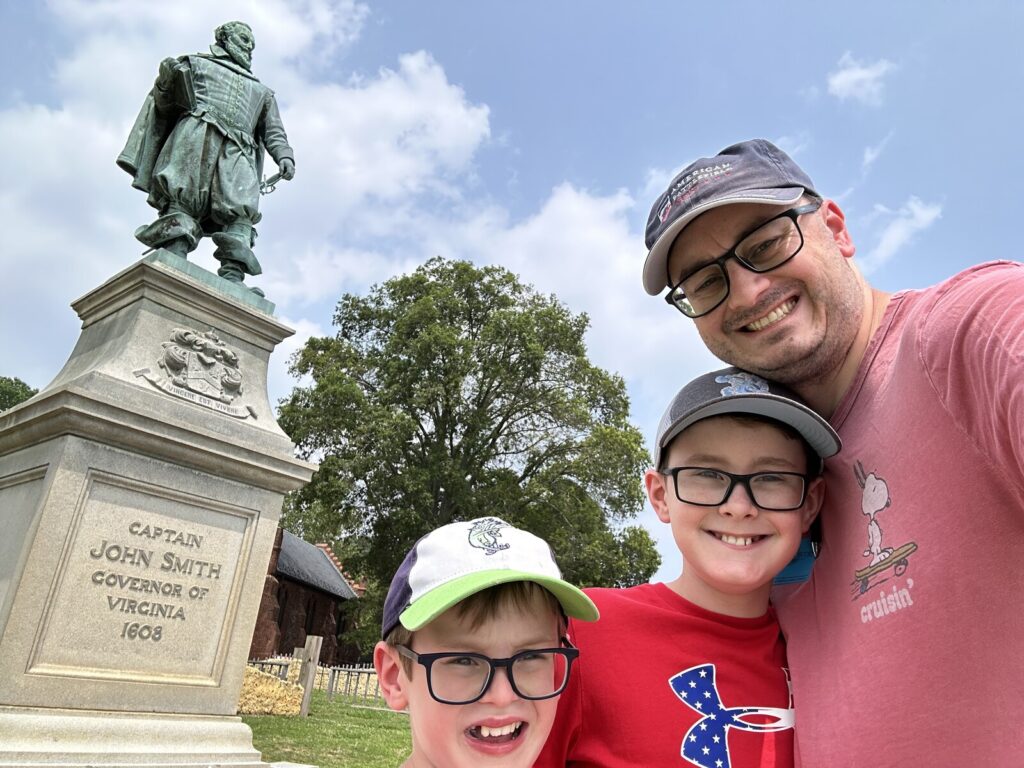
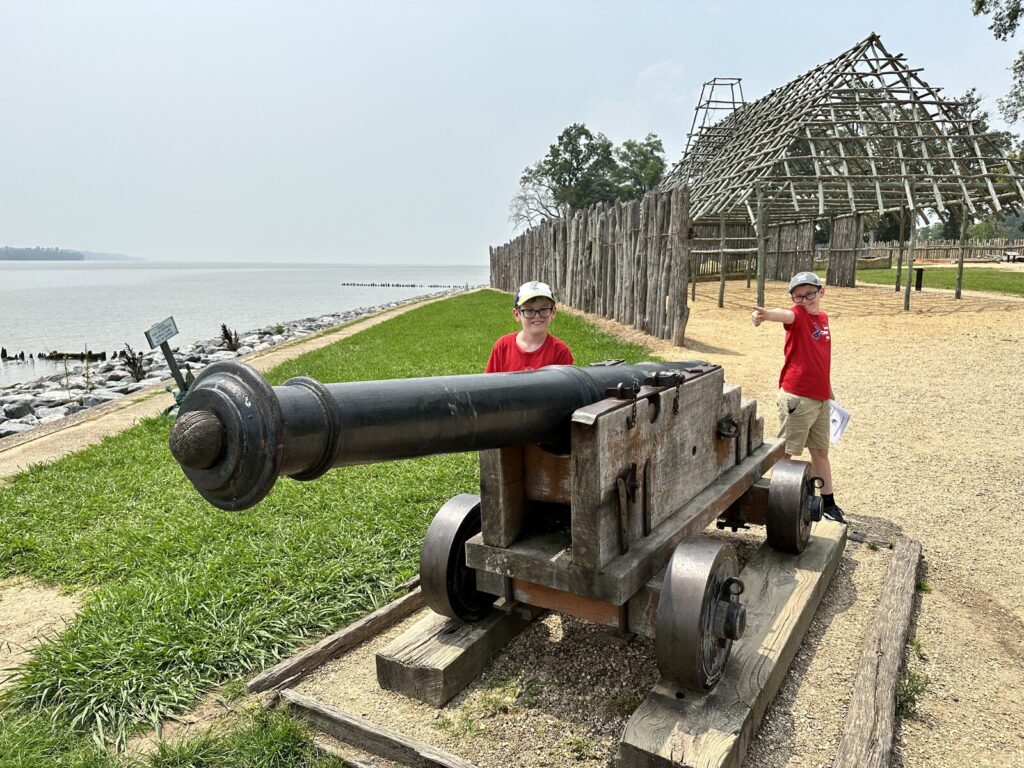
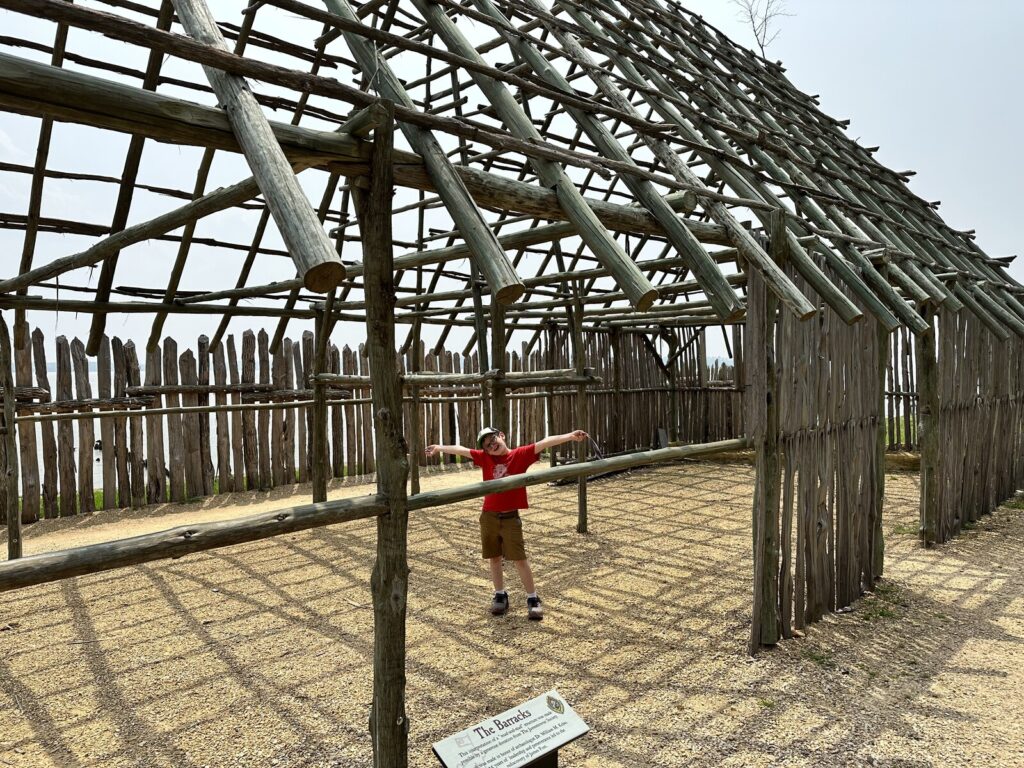

In addition to the usual Junior Ranger program, the boys got to get their hands dirty making some pottery with a ranger. The decking across the wetlands also made for some good nature exposure. John spotted a baby turtle down in the marsh.
Battle of Williamsburg – Civil War Battlefield #176
Moving forward from Yorktown, the Union army attacked the Confederate defenses here at Williamsburg on May 5, 1862. In back-and-forth fighting, no conclusive advantage was gained. The Confederates pulled back toward Richmond overnight.
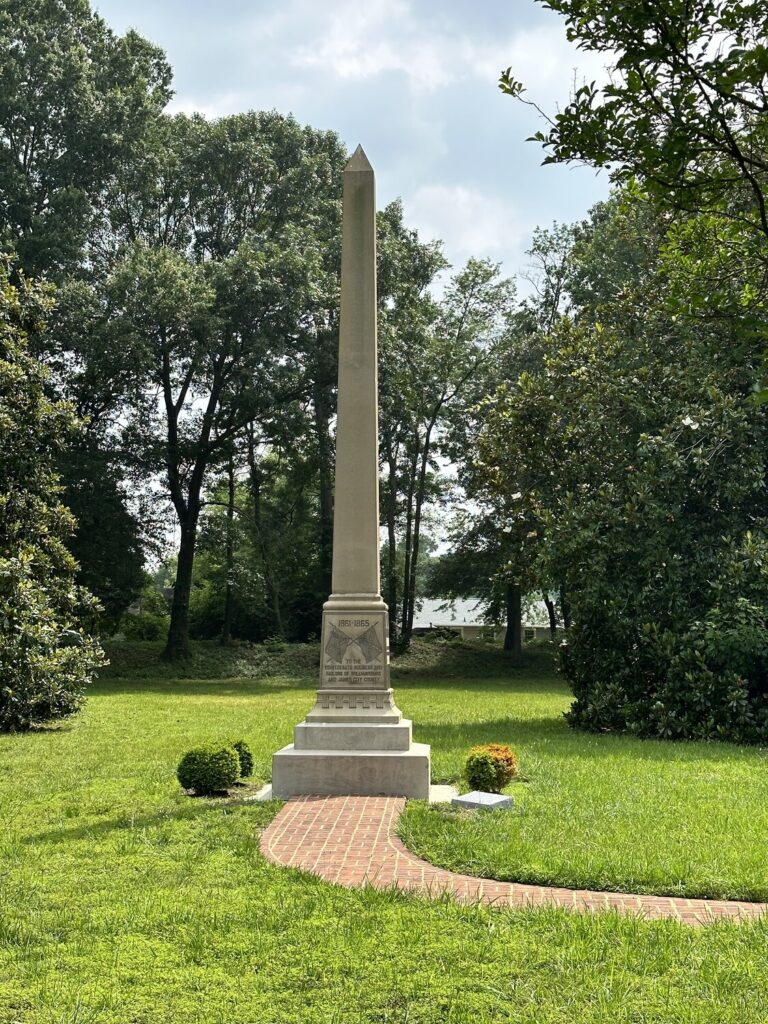
The site of Fort Magruder at the Battle of Williamsburg – including what look like some of the earthworks – is preserved, but the fenced-in area has plenty of “No Trespassing” signs. We were able to get some photos from the fence line.
Battle of Eltham’s Landing – Civil War Battlefield #177
While half of McClellan’s army attacked the Confederate fortifications at Williamsburg, Brig. Gen. William B. Franklin’s division was sent by boat up the York River to Eltham’s Landing in an attempt to get in behind the rebel lines. Confederate Gen. Joseph E. Johnston had troops in place to watch for such a move and was able to attack with John Bell Hood’s brigade the day after the Union troops landed. The Federals fell back toward the landing, and the gunboats that had escorted their landing fleet were able to provide covering fire. The rebels disengaged, and the Federals didn’t follow them. The Battle of Eltham’s Landing was another inconclusive fight.
Today, there is a wayside and a small parking area near the heart of the battlefield.

Battle of Walkerton – Civil War Battlefield #178
In the spring of 1864, Union horsemen under Brig. Gen. H. Judson “Kill-Cavalry” Kilpatrick attempted a raid into Richmond with the hopes of freeing several Union prisoners held at the Belle Isle prison. The attempt failed because Col. Ulric Dahlgren’s men were unable to swing around Richmond and attack from the rear.
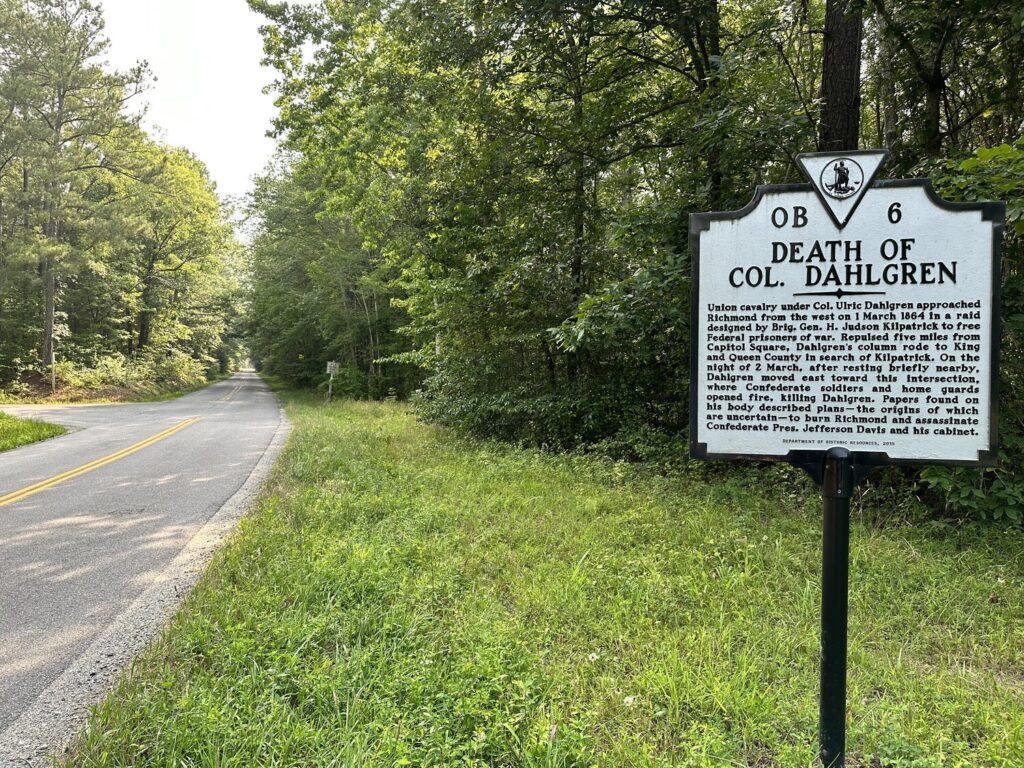
As his men tried to find their way north again, they were attacked by elements of the 9th VA cavalry here at the Battle of Walkerton. Several of them were captured, and Col. Dahlgren (son of the Father of American Naval Ordnance, RADM John A. Dahlgren) was killed. Confederates alleged that they found papers on the young Dahlgren’s corpse that ordered him to burn Richmond and assassinate Confederate President Jefferson Davis. The Lincoln administration denied the authenticity of these orders, but the entire “Dahlgren Affair” remains a point of some controversy to this day.
There is a single, lonely marker at the site where Col. Dahlgren was killed to commemorate this small, but quite consequential fight.
After 6 days visiting dozens of battlefields and historic sites across 3 states, that’s a wrap for our “Epic Man Trip”!
We stopped at my brother’s new house in Aquia Harbor, VA and had dinner with his family, before we made our way back home to Delaware later that night. It was an awesome trip.